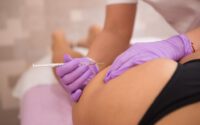Stem cell human embryo conceived without sperm, egg: breakthrough study
In a scientific breakthrough that raises a number of medical and ethical issues, researchers have used stem cells to create living, growing models of a human embryo.
Because stem cells were used, there were no human eggs or sperm needed to develop the embryo structures.
“This is really a textbook image of a human day-14 embryo,” which “hasn’t been done before,” Jacob H. Hanna, professor in the Department of Molecular Genetics at the Weizmann Institute of Science in Israel, told the BBC.
Embryo models differ from an actual embryo in that they are stem cell-based, so they can be made easily and in high numbers, according to the Francis Crick Institute in London.
Current embryo models are somewhat crude, simple structures that can exhibit some of the behavior of an embryo, but none are the same as an embryo and they cannot grow to maturity.
The base material for the embryo model was stem cells that could grow into any type of bodily tissue. The researchers used chemical additives to coax the stem cells into forming the tissue in embryos, placentas and other living structures.
Scientists combined 120 of these cells in a precise ratio, mixed them in a shaker, and then watched to see what developed — and soon, an embryo-like structure formed spontaneously.
“This is the first embryo model that has structural compartment organization and morphological similarity to a human embryo at day 14,” Hanna told the Guardian.
“I give great credit to the cells — you have to bring the right mix and have the right environment and it just takes off,” Hanna said. “That’s an amazing phenomenon.”

The embryo models included a placenta, a yolk sac, an outer membrane called the chorionic sac and other cellular structures one would see in human embryos of approximately the same age.
But the embryo models aren’t exact replicas of human ones: the trophoblast, which eventually forms into a functioning placenta, was present but not properly organized, noted Dr. Peter Rugg-Gunn of the Babraham Institute near Cambridge, UK.
“This embryo model would not be able to develop if transferred into a womb, because it bypasses the stage needed to attach to the womb lining,” Rugg-Gunn said.
The medical research, published in Nature, could shed light on some of the health issues that occur during the first few weeks of fetal development, such as miscarriage and birth defects.
That period of gestation is now poorly understood: “It’s a black box and that’s not a cliche — our knowledge is very limited,” Hanna said.

Hanna also noted that the procedure could aid in pharmaceutical research and the effect certain drugs can have on a developing fetus. Currently, many drugs are not tested on pregnant women because of safety and ethical concerns.
Robin Lovell-Badge of the Francis Crick Institute said the embryo models developed at the Weizmann Institute “do look pretty normal.”
“I think it’s good, I think it’s done very well, it’s all making sense and I’m pretty impressed with it,” Lovell-Badge said.
He also noted that continuing embryonic development beyond the 14-day period is currently legal, because embryo models are legally distinct from embryos.
Allowing embryonic development beyond that point is, however, fraught with ethical and medical concerns: “Some will welcome this — but others won’t like it,” Lovell-Badge said.


